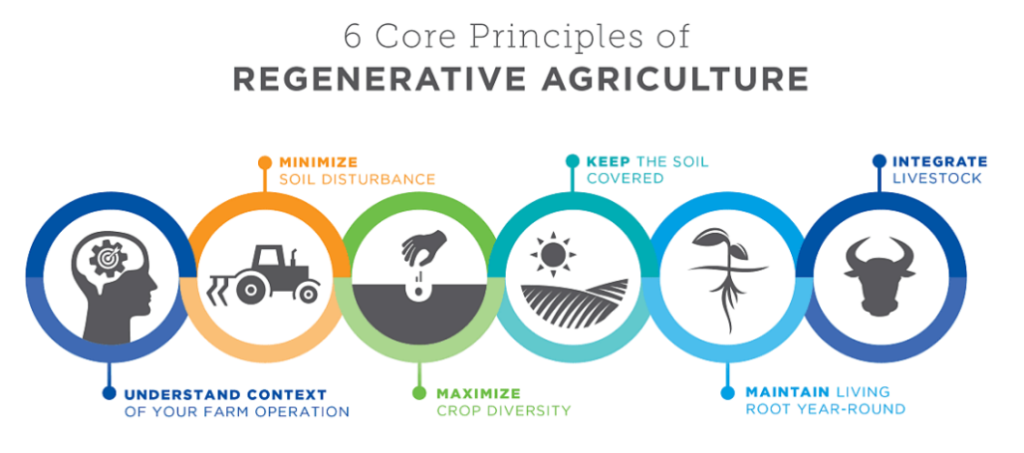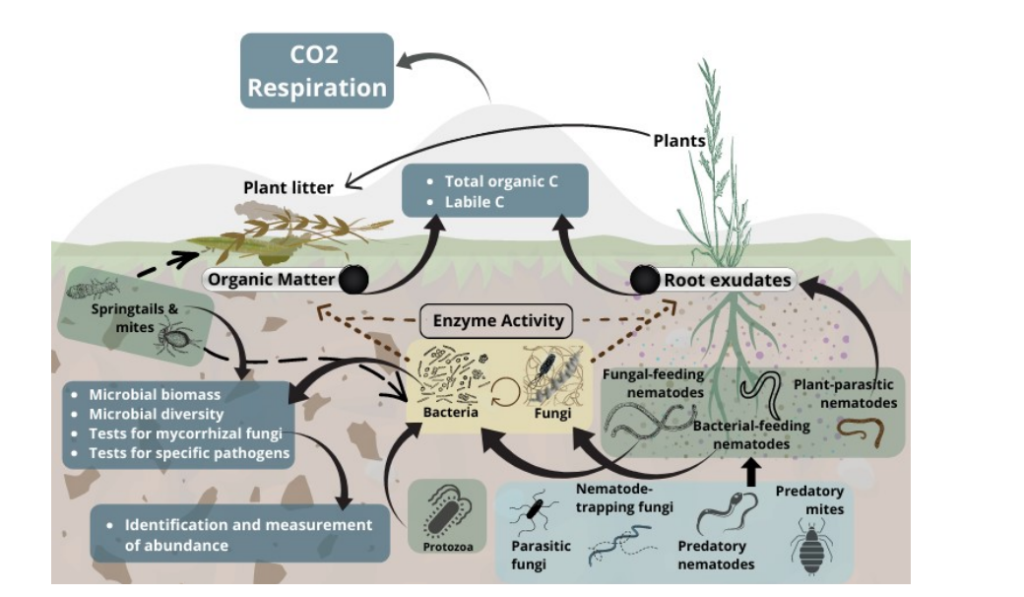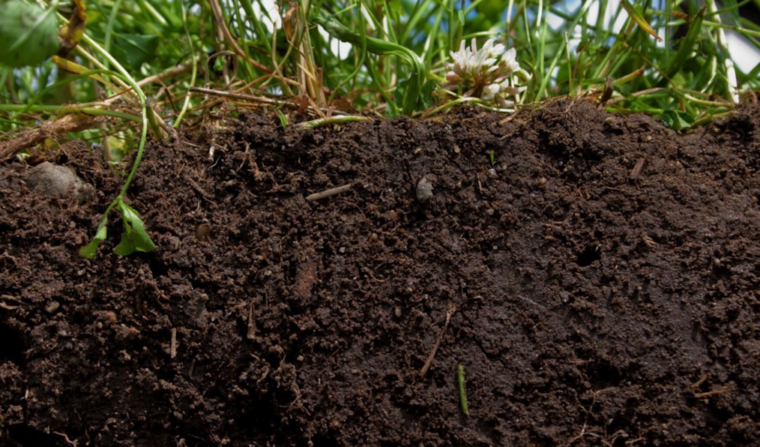Brown Barn Farm is committed to supporting climate-friendly organic farming practices that help heal the world. We believe Regenerative Agriculture is the world’s best available farming strategy for responding to the looming food, water, and climate crisis.
Regenerative agriculture has at its core the intention to regenerate which restores the health of soil and the surrounding environment. It typically employs techniques that promote efficient use of natural resources and building soil health, increasing biodiversity and reducing carbon emissions. There are six principles that dominate regenerative farming.

The six core principles to regenerative agriculture are:
- Context
- Minimize Soil Disturbance
- Diversity
- Protect Soil Surface
- Maintain Living Roots
- Livestock Integration
Context
Understanding the context of your farm means regenerative agriculture can be implemented in line with individual farm operations. No two farms are alike, they all have different climates, soil types, crop/livestock types, funding availability, skills and goals that will influence them and their operations.
Studies have found contextual regenerative farming can produce crops with higher levels of vitamins, minerals and phytochemicals and lamb with higher levels of omega-3 fats. This has the potential to help farmers produce more nutrient dense foods, which could improve overall human nutrition.
Minimize Soil Disturbance
Improving and regenerating soil is at the heart of regenerative agriculture, therefore understanding and applying the principle of reduced soil disturbance is essential. There are three types of soil disturbance: Physical, Chemical and Biological.
Physical Disturbance: tillage or grazing which removes the biological integrity of the soil ecosystem. This can be reduced through the reduction, or elimination of tillage practices, reduction of machinery compaction, and minimizing overgrazing.
Chemical Disturbance: application of fertilizers and pesticides which can be detrimental to microbes within the soil. Minimizing chemical applications will reduce this disturbance.
Biological Disturbance: a lack of living roots within our soil causes biological disturbance.
- No till/minimal tillage enhances soil aggregation and carbon sequestration.
- Animal health and nutrition is enhanced through soil health improvements and better quality forage.
- Improved soil organic matter benefits crop yields due to its improved nutrient supply.
- Undisturbed soil allows for living organisms to situate and function properly.
- Minimizing soil disturbance maintains soil integrity, pore connections and improves soil fertility.

Diversity
This principle highlights the importance of maximizing community diversity to promote healthy, functional ecosystems and decrease pest and disease occurrence. Practices such as rotational pasture grazing, companion cropping, and cover cropping could be implemented to encourage plant diversity. Multispecies grazing on diverse mixes of forage in pastures could be implemented to encourage habitat diversity.
- Biodiversity enhances ecosystem function because different species perform slightly different roles.
- Improving crop diversity increases drought and flooding resilience.
- Cover crops, diverse crop rotations boost soil fertility and build biological ecosystems.
- Perennial pasture will increase soil water storage capacity through organic matter accumulation.
- Crop diversity has been found to help suppress disease and control pests, with one study showing a 73% disease reduction compared to monocrops.
Cover Soil Surface
This principle highlights how crucial the soil surface, a layer of mineral soil with high organic matter accumulation, is for water regulation, soil structure and nutrient sourcing. Having the soil surface covered with living plants, or crop residues protects the soil itself, and the organisms living within it, against weathering and erosion damage. The most successful way of implementing this principle is through over winter cover cropping, alongside grazing pasture management.
- Provides soils physical protection from rainfall, trampling and frost damage.
- Protects soil from sun exposure which can cause erosion.
- Cover-crops act as a windbreak and reduce topsoil erosion.
- Improves soil structure resulting in a more diverse, effective infiltration, and gas exchange.
- Encourages increased worm and microbial activity.
Maintain Living Roots
This principle highlights the importance of maintaining living roots within the soil to retain nutrients, improve plant growth and microbe biodiversity. Living plants photosynthesize energy from the sun into chemically bound energy which is then transferred into plant root systems and the soil ecosystem. When soil does not contain living roots, it continues to metabolize organic matter, releasing carbon as CO2, which then passes into the atmosphere. Maintaining living roots is therefore important to maintain soil carbon sequestration. Living roots are important for plant-plant and plant-soil communications via root exudates. Root exudates are chemical compounds, released from living root cells, that act as signaling molecules to help mediate plant-microbe interactions. These exudates have a positive influence on plant growth and soil health, via a wide array of mechanisms including enhanced supply of nutrients, increased nitrogen fixation, and increased stress tolerance. Living roots are also important for plant-root absorption of nutrients and water. This is done via an extension of the plant root – mycorrhizal fungi. The fungi pass water and nutrients to the plant, and the plant in turn supplies the fungi with energy from photosynthesis. This mycorrhizal fungus interconnects individual plants to form common mycorrhizal networks, which can transport signals in response to pathogen infestation, acting as a natural pest management to protect the plants.

- Plants which are left in place for longer grow deeper roots which encourage the build-up of organic matter and reduces the risk of soil erosion.
- Situated plants protect the soil from erosion.
- Plants absorb residual nutrients and hold them so they’re available for the next crop.
- Improves soil infiltration, run off reduction and soil aggregation through the excretion of polysaccharides from root exudates which acts like glue to hold the soil together.
- Root exudates provide energy (polysaccharides) for the base of the food web.
- Mycorrhizal fungal strands are smaller than plant roots, cover greater spatial extents and grow in smaller soil pores. This is vital for nourishing plants with extensive, free fertiliser and watering services.
- Mycorrhizal fungi transport plant-plant signals which mean uninfected plants can respond to the potential risk of pest, or pathogen infection before they are themselves attacked.
Livestock Integration
This principle highlights the importance of responsibly grazing livestock to spread organic matter and increase nutrient cycling and plant growth. This can be done through high impact mob grazing: short disturbance followed by long recovery periods. The management and of critical grazing fundamentals must be considered to ensure this principle is successfully implemented: these are timing, frequency, intensity, duration, and rest. Although for some farming systems the integration of livestock is not possible, this principle can still be considered, for example through the use of manure as an organic source of nutrients.
- Well managed grazing practices stimulate plant growth and increase soil carbon deposits, grazing land productivity, soil fertility, plant biodiversity and soil carbon sequestration.
- Grazing can reduce livestock stress and disease incidences as it reduces competition for grass between cattle by allowing them to graze one area before moving on to the next.
- Suitable livestock integration can improve pasture performance. Long recovery periods allow soil and plant species to recover and encourages multispecies pasture diversity.

